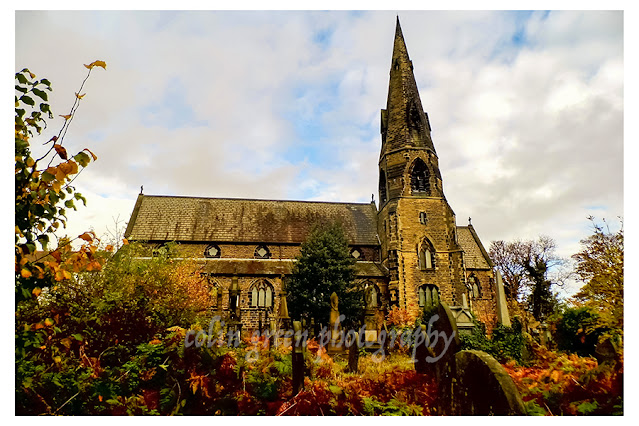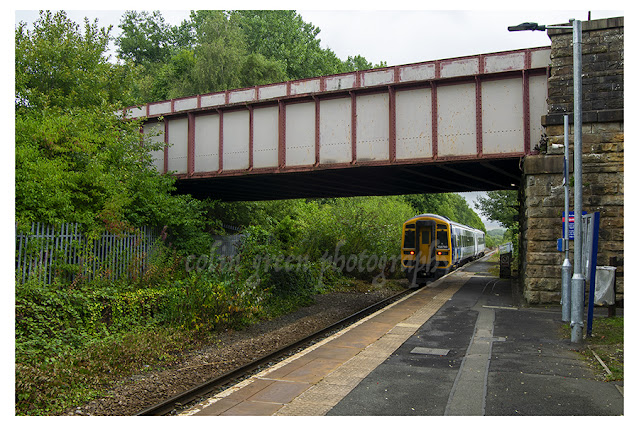The crisp air, the rustle of fallen leaves underfoot, and the warm, low light of an autumn day create the perfect atmosphere for a journey back in time. On October 24, 2014, I found myself drawn to the timeless beauty of All Saints Church in Salterhebble, Halifax. Armed with my Polaroid is2132 bridge camera, I set out to capture the essence of this historic place, and the resulting images tell a story of faith, community, and the passage of time.
As you approach the church, the first thing that strikes you is the sheer presence of the building. The tall, elegant spire reaches towards the sky, a beacon of faith built from the local stone. It’s no wonder that a significant part of its construction was a community effort, with Samuel Rhodes generously providing over 400 cartloads of stone from his own quarry. This collaborative spirit is etched into the very fabric of the church.
Designed by the prolific architects James Mallinson and Thomas Healey, whose work can be seen in several other churches in the area, All Saints Church is a testament to the Victorian Gothic Revival style. The pointed arches, intricate stonework, and stained-glass windows are all hallmarks of this architectural movement, designed to evoke a sense of awe and reverence. The foundation stone was laid on August 26, 1857, and the church was consecrated and opened for worship the following year, in 1858. It has been a continuous place of worship ever since, its walls having witnessed generations of baptisms, weddings, and funerals.
Walking through the churchyard is a contemplative experience. It’s an overgrown, verdant space, where ancient headstones, some leaning and weathered with time, are partially reclaimed by nature. The sepia tones of the photographs capture this sense of history and quiet decay, highlighting the ornate crosses and memorials that stand as silent sentinels. A path, strewn with fallen leaves, winds its way between the graves, inviting you to wander and reflect.
One of the most remarkable sights in the churchyard is a large, ornate memorial, a striking contrast to the more traditional headstones. This is a mausoleum, a grand statement of remembrance and a captivating piece of architecture in its own right. With its intricate arches and detailed carvings, it stands as a testament to a significant person or family from the parish's past.
Another discovery was a hidden gateway, a small archway in a stone wall, half-covered in thick foliage. It felt like a portal to another world, a secret entrance to a part of the church grounds less travelled. The vibrant greens of the leaves, still holding onto their colour in the autumn light, create a beautiful frame for the simple stone steps that lead you through.
The images taken that day, some in rich colour and others in a timeless black and white, capture the dual nature of All Saints Church. It is both a functioning place of worship and a living, breathing piece of history. The autumn colours highlight the beauty of the surrounding nature, while the monochrome images emphasize the architectural details and the solemnity of the graveyard.
As I left All Saints Church that day, I felt a deep appreciation for its enduring presence. It’s more than just a building; it’s a repository of stories, a link to the past, and a quiet haven in the bustling world. It stands as a powerful reminder of the community that built it and the history that continues to unfold within its walls.
Clicking any of the images below should open a link in another window to my Colin Green Photography store on Zazzle.
























































